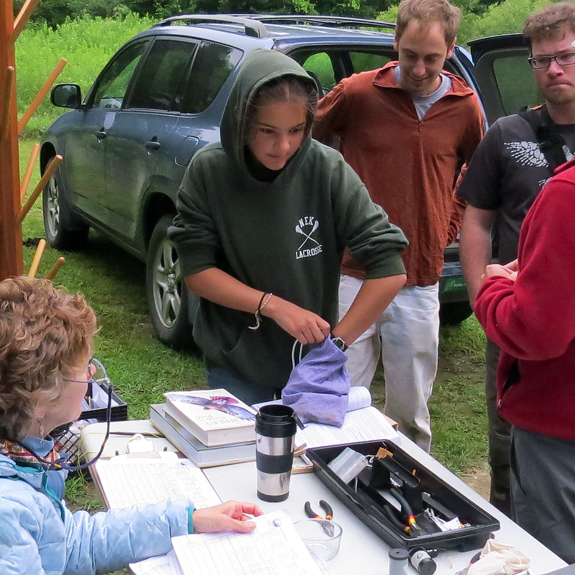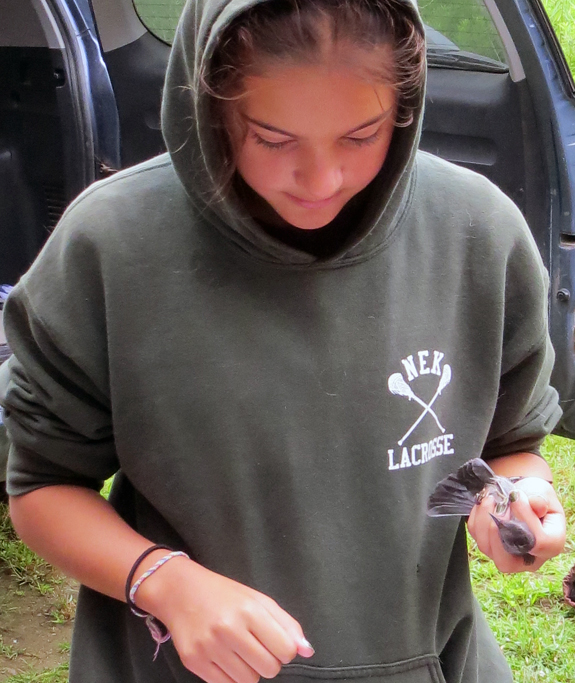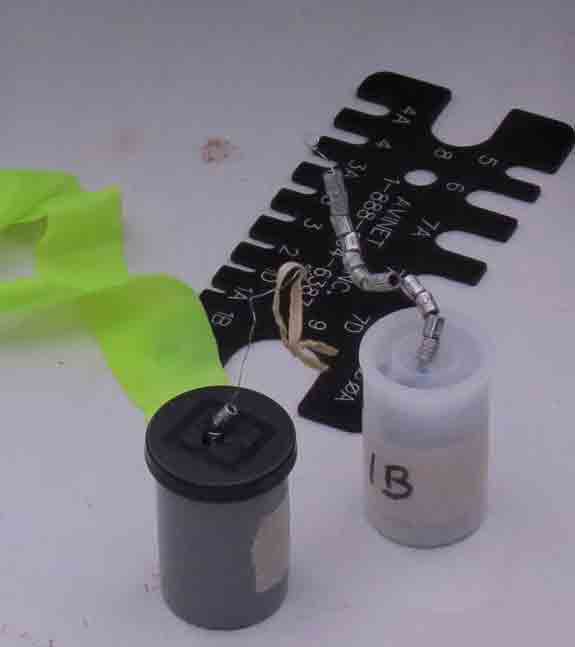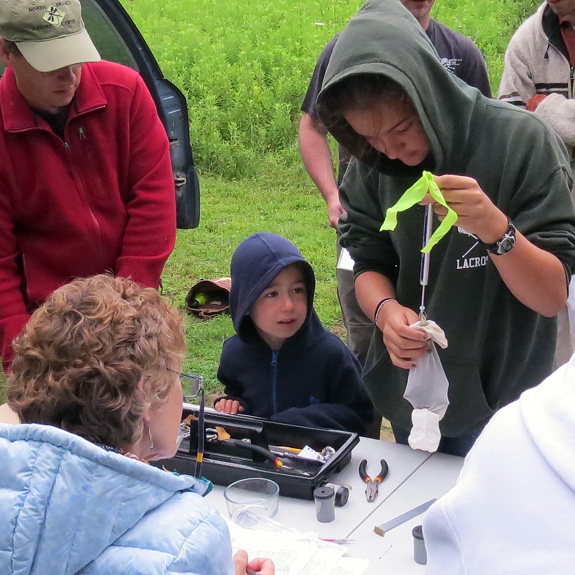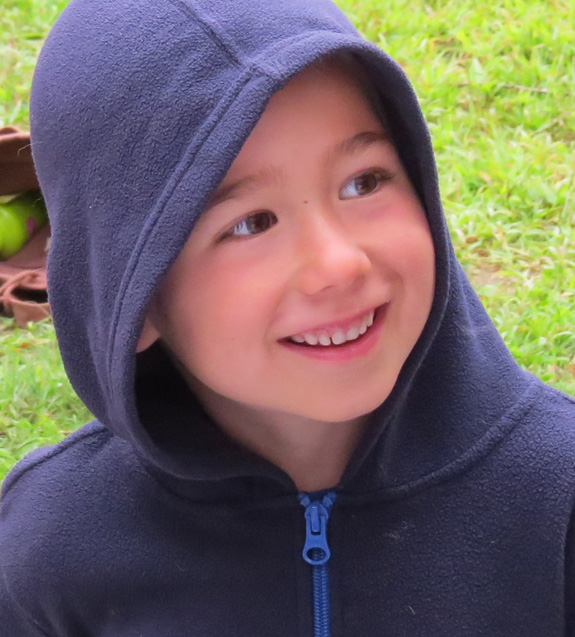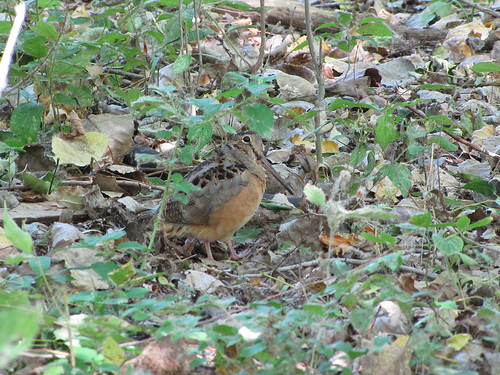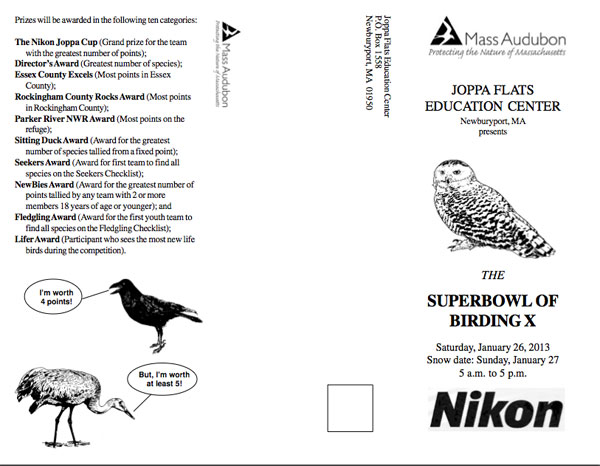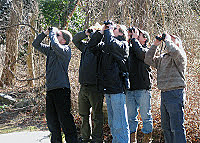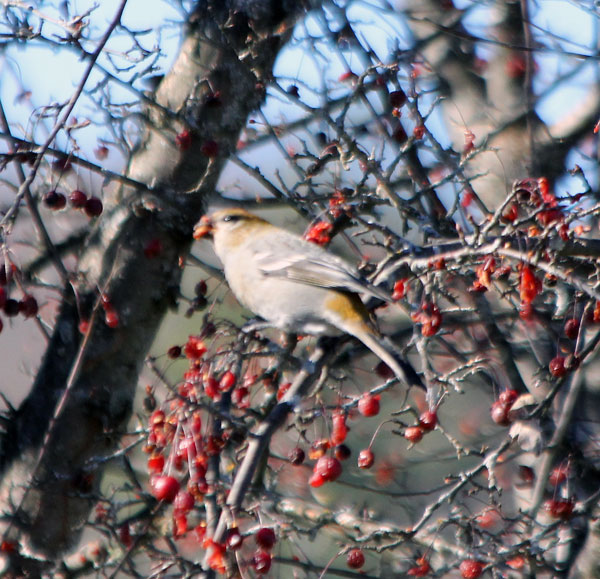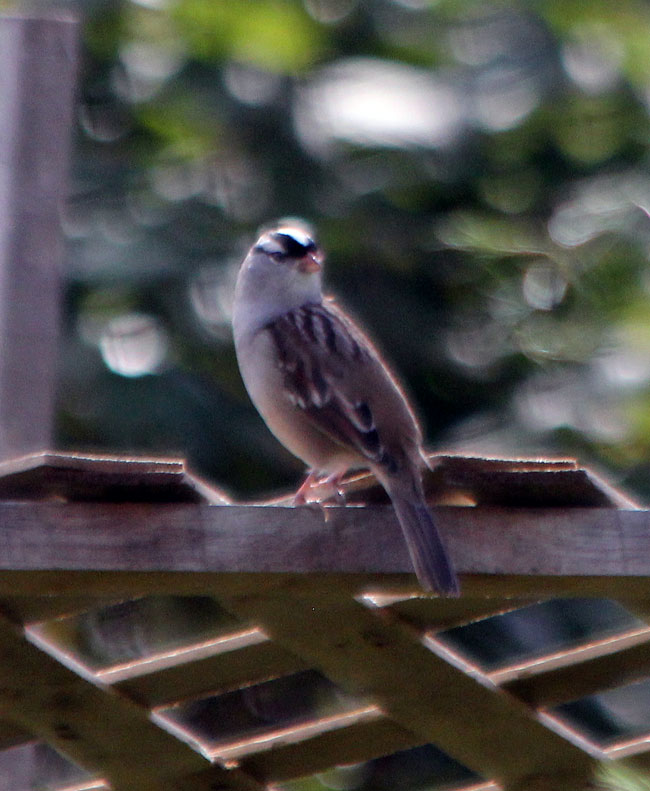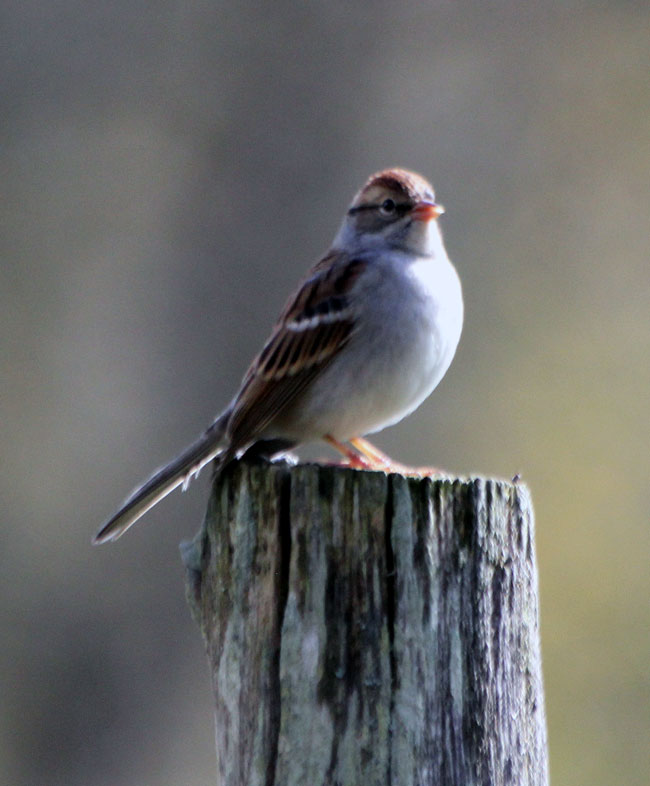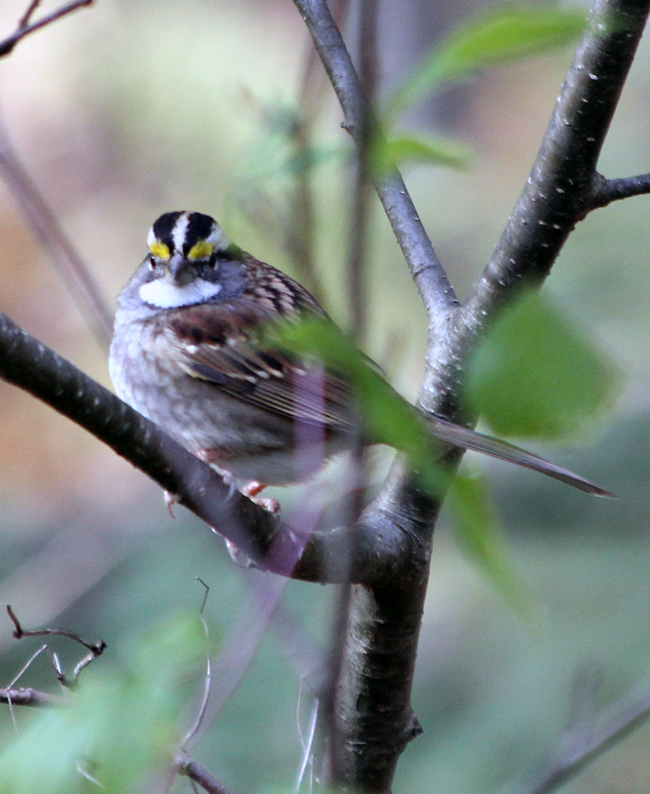Yesterday morning, Mary and I dropped in at a public bird banding demonstration at North Branch Nature Center led by Director Chip Darmstadt. Jen and Mac came a bit later and were fortunate to see a rather rare Yellow-billed Cuckoo — not caught but just hanging out in the area. I had seen banding several times but Mary had not and we both we enthralled by the one bird we saw banded and released. Here are some shots — a young birder, experienced in banding, handled this one with guidance from Chip.
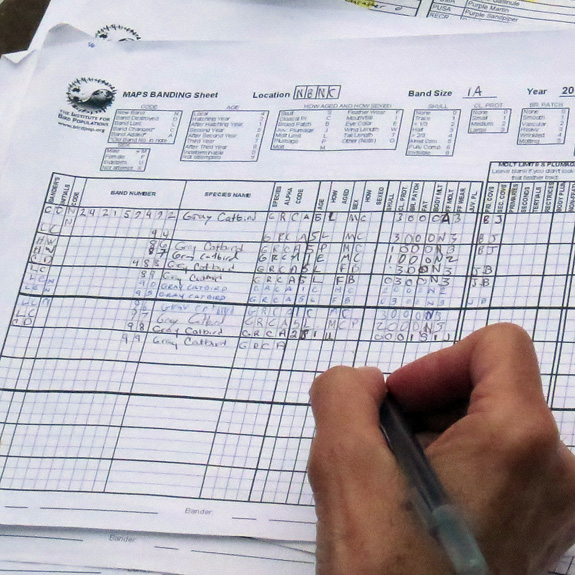
A volunteer records information on each bird as it is examined. The data is sent to the Institute for Bird Populations.
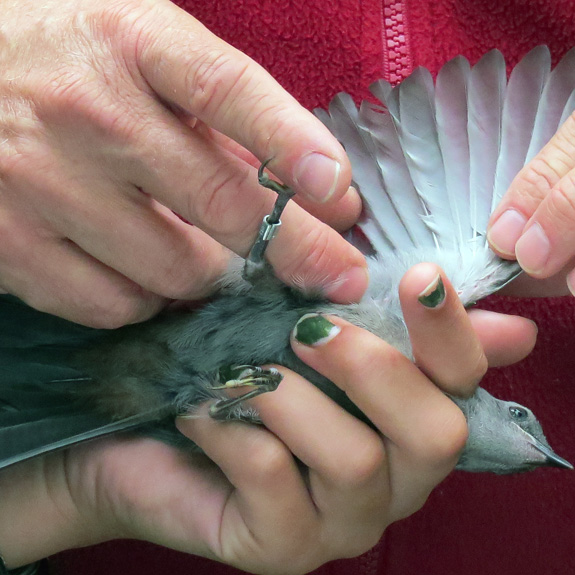
The bird is carefully examined. The brownish fuzz under the tail tells Chip that this is a hatch year bird.
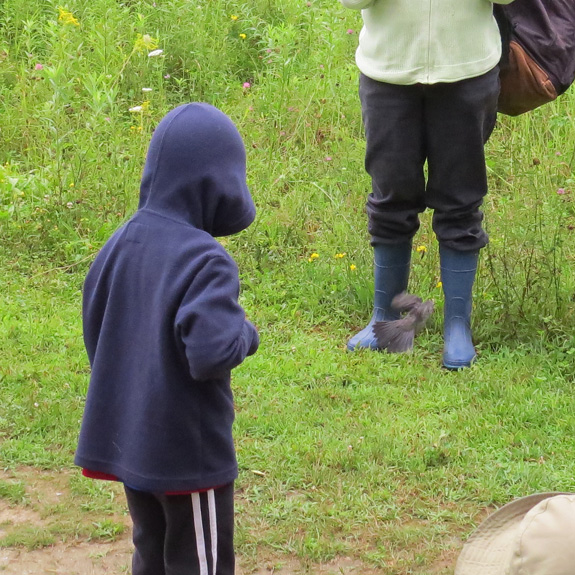
Not a great release shot but there goes the young catbird, no worse for wear, and now part of an extensive database. Perhaps we’ll trap him next year and read his band – or next week.
If you have an opportunity to observe banding, I highly recommend it. You not only learn about the process and how to handle birds, but you also get a better appreciation of all the research work that is being done to track and monitor our avian friends. Good birding.

